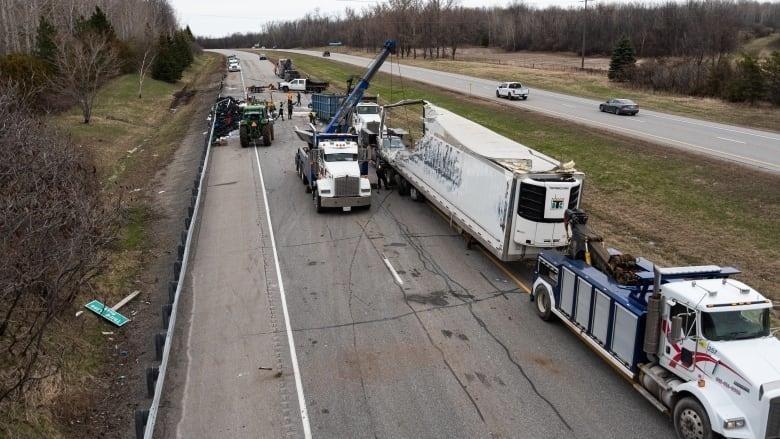
OPP says there will be more than 9,000 accidents with big trucks in 2022
After 2022, when there were more transport truck accidents than in any other year in more than a decade, the Ministry of Transportation and the Ontario Provincial Police are doing more to make sure commercial vehicles are safe.
According to a news release from the OPP, there were 9,110 accidents involving large trucks on OPP-patrolled roads last year. This is the most accidents involving large trucks on OPP-patrolled roads in more than 10 years.
“It’s a big number,” said Sgt. Erin Cranton, who was filling in.”These accidents made up 12% of all accidents last year and, tragically, killed 71 people.”
OPP said the main reasons were improper lane changes, high speeds, and following too closely.
Police and the ministry are working together on an enforcement blitz called “Operation Safe Driver” to stop “risky behavior” by both commercial and non-commercial drivers.
It begins on Sunday and goes through July 15.
Fault spread aroun
Based on the data, it’s clear that truck drivers aren’t the only ones to blame.
In 2022, the OPP charged the drivers of the other vehicles 1,078 times when they were involved in a crash with a truck.
“A lot of people who drive cars don’t drive carefully,” said truck driver Sanyam Gupta when asked about his experiences on the highways.
“They just come in the lane and turn on their signal… We have to brake for a long time before we can stop. We have a lot of weight inside.”

Another driver, Akash Rai, agrees with that, but he says that truck drivers can also make bad choices.
“Sometimes drivers [are] tired. For example, a truck driver might be tired, but they didn’t stop for a break. They keep driving for nine or ten hours straight, so you’ll be tired.”
Strict rules in plac
There are strict rules about how long a commercial driver can be on the road from a federal level. Drivers can’t be on the job for more than 13 hours, and they have to have 10 hours off each day.
Eight of those hours off-duty must be in a row.
In 2019, Transport Canada made it necessary for some drivers who cross provincial or territorial borders to keep track of their hours with electronic logging devices.
These devices replaced the paper logs that drivers used to keep track of their hours. They were meant to prevent driver fatigue by making it impossible to fake the logs.
They can also keep track of things like where a vehicle is and how fast it is going. When law enforcement officials ask for the records, drivers must give them to them.
Since January 2023, the rules have been in place, and the fines in Ontario range from $250 to $20,000.
